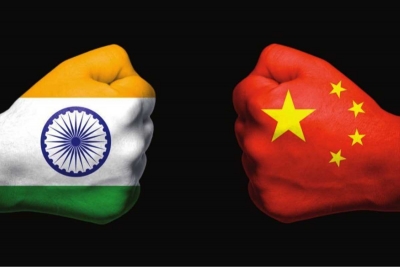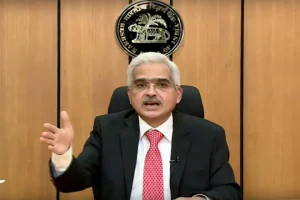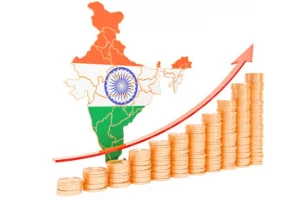Can India, now officially the most populated country in the world, maintain its growth momentum in the coming years? Beating expectations, India’s economy expanded 7.2 per cent in 2022-23 compared to China’s 3 per cent in 2022. Analysts said that rise in consumption is one of the growth drivers for India. And as India aims to touch the $5 trillion economy mark, the role of its young population will take centre-stage in driving consumption.
With a relatively young population (median age of 28.4 years), India not only gets a competitive advantage in terms of workforce but also an opportunity to unleash the consumption power of a young population, a recent E&Y report said.
It added that approximately 26 per cent of India’s population is below 14 years of age, 67 per cent is between the age group of 15 and 64 years. Only 7 per cent is above the age of 65.
Contrast this with China.
In China, the percentage of people aged 60 or above was estimated at 18.7 per cent in 2020. By 2040, this is set to rise to 28 per cent, the World Health Organisation estimated. This along with the falling birth rate has become a cause for concern for Beijing.
In 2022, China recorded just 6.77 births per 1,000 people — the lowest birth rate in its history. In the previous year, there were 7.52 births per 1000 people.
The E&Y report highlighted that India would remain the largest provider of human resources in the world. About 24.3 per cent of the incremental global workforce over the next decade will come from India, it said.
“This is significant considering the rapidly ageing population in the developed world, creating potential challenges to labour supply in various sectors of the global economy,” the report said.
Meanwhile, Hong Kong based South China Morning Post (SCMP) noted that a widening demographic imbalance – resulting from a low birth rate combined with a rapidly ageing population – continues to plague the world’s second-largest economy, which long benefited from a huge demographic dividend.
“And how this will affect China’s economic prospects is a hotly debated topic full of nuance,” it said.
In 2021, Beijing lifted its two-child policy — allowing married couples to have three children. But experts said that the policy may not work.
“China ended its one child policy in 2015—it allowed couples to have two children but the result has not been noteworthy. The rise in uncertainty within the country has led to many couples opting not to have children or just having one as has been the rule for years,” a China expert said.
An ageing population has impacted domestic demand in China. The country’s manufacturing purchasing managers’ index (PMI), compiled by its National Bureau of Statistics (NBS) declined to 48.8 in May from 49.2 in April—the lowest this year. In December, the dragon’s manufacturing PMI stood at 47.
A reading below 50 indicates contraction.
China’s other problems
Joblessness and slowing exports have also dented manufacturing in China.
“It seems increasingly clear that the global economic slowdown is weighing on China’s exports,” SCMP quoted Iris Pang, chief economist for Greater China at ING as saying.
Last month, the news organisation pointed out that major products exported under the category include smartphones, computers and integrated circuits, and shipments have been declining for months amid dwindling demand.
An industry body member opined that there is a rising apprehension among many countries to increase supplies from China.
“In the post-Covid era, many countries are aggressively looking to diversify their supply chains and with Beijing coming under a spotlight for its Taiwan policy and the trade war with the US..somewhat there is a growing reluctance by many countries to import products from China,” he said adding that the slowdown in factory output is bound to have an impact on employability.
The economic factors have led to rise in joblessness especially for people between the age of 16 and 24 years. Unemployment among this age group increased to 20.4 per cent almost double of about 10 per cent in April 2019—before the outbreak of Covid 19 pandemic.
For China, therefore, resolving the social issues would be critical for stable and sustained economic growth.
Also read: After the ‘historic’ summit, is China snaring Central Asia in a debt trap?




















